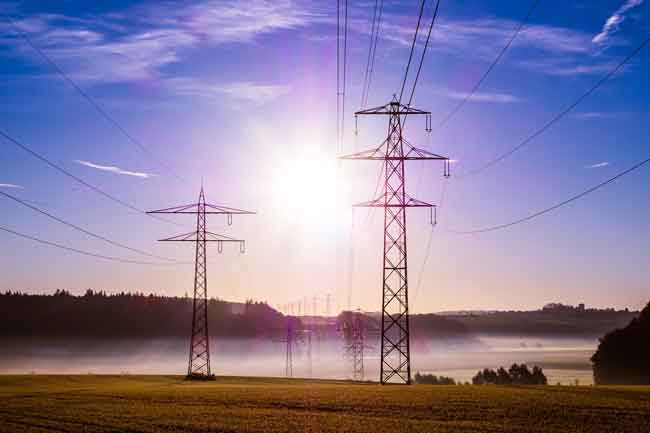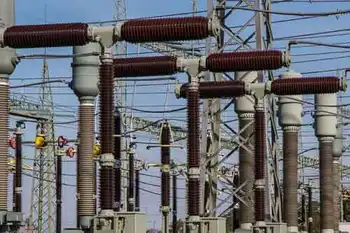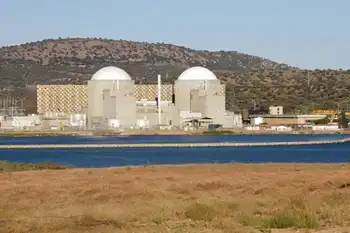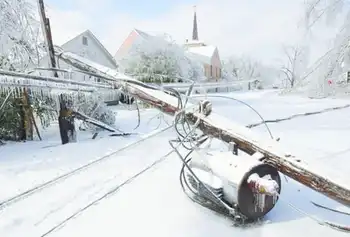US citizens worry energy boom could ruin outdoors economy
By Associated Press
CSA Z463 Electrical Maintenance
Our customized live online or in‑person group training can be delivered to your staff at your location.

- Live Online
- 6 hours Instructor-led
- Group Training Available
But the Andersons have seen fewer animals since gas drilling began in their subdivision south of Rifle. Then they learned that a company plans to build a well on their 30 hectares and that there is little they can do about it, because they don't own the rights to the minerals underneath.
"I wouldn't buy there now and nobody else wants to, either," Garland Anderson said over a recent breakfast in a small diner.
Similar complaints are cropping up around the Rockies, which last fall were described by the head of the U.S. Federal Energy Regulatory Commission as "ground zero" in the Bush administration's drive to increase domestic energy development.
The plan has run into unusually broad opposition in western Colorado, from relatively new arrivals like the Andersons to veteran landowners who remember when the region's oil shale industry went bust in 1982. Even commissioners in revenue-starved rural counties say energy companies are running roughshod over local rights.
Many here support multiple use for the West's sprawling public lands, including responsible energy development. But they worry that this new boom threatens not only the environment but the outdoors-based economy that has replaced the oil-and-gas backbone of the 1970s and '80s.
"We've seen this industry go boom and bust a couple times," said Peggy Utesch, a media consultant who lives in nearby Silt. "For people like us that live in this valley, and probably will for the rest of our lives, that is a big concern."
Keith Goddard said he questions whether some of the deer and elk hunters he has guided for years on western Colorado's Roan Plateau will return if there is widespread drilling.
"Guys paying $2,500 to $3,500 don't want to be sitting down, and then here's a gas rig going," Goddard said. "That puts me out of business. But even if I weren't a hunter, I'd be concerned. What price do you put on wildlife?"
Industry representatives insist they can help meet the demands of an energy-hungry country in a responsible way, pointing to new technology and drilling techniques that have less impact on the environment.
Bev and Sam Sharp hope that isn't idle talk.
Four years ago, the retired teachers from southern California moved to a house atop a bluff in Pinedale, in the western foothills of Wyoming's Wind River Mountains. They live along a migration route for mule deer and pronghorn antelope thought to be one of the longest such corridors in the Western Hemisphere.
Since then, hundreds of gas wells have been drilled in the area and more are in the works.
"People are moving this way for beautiful landscapes and wildlife, and we're afraid that's going to be taken out at an alarmingly quick rate," Bev Sharp said.
Hunters, ranchers, environmentalists and others say energy companies are building roads and drilling wells without working with landowners, a claim the companies deny. Some of the fiercest fights involve the so-called "split estate," in which landowners have surface rights but someone else owns the rights to the underground minerals.
Companies that own or lease the minerals are entitled to develop them, and landowners say they have little leverage or protection.
"You have people moving in here who were not reliant on energy jobs," said Josh Joswick, a commissioner in southern Colorado's La Plata County, which successfully fought state regulators and companies in court for a say in oil and gas production.
"They bought their five, 10, 20 acres of southwestern Colorado and all of a sudden, boom! They've got a gas well 150 feet (45 metres) from their back porch."
Dave Cesark, environmental specialist for the exploration and production division of Oklahoma-based Williams Cos., one of the biggest players in the Rockies, said his company works hard to keep landowners happy.
But he concedes conflicts are becoming more common.
"People are moving here, building froofy homes, and there's a lot of development in an area that hasn't seen a lot of development," Cesark said. "It's almost a land battle."
More than 100 economists last month told President George W. Bush and western governors the environment is arguably the West's "greatest, long-run economic strength." They also said the energy bust in the mid-1980s forced communities from Montana to New Mexico to diversify their business base - progress they fear might be erased with a return to oil and gas.
"It directly threatens the source of growth and prosperity this region has had," said Tom Power, chairman of the University of Montana's economics department.
Others, however, are eager to cash in. Drilling was expected to raise $11.6 million US in property taxes and $1.6 million in other taxes for Colorado's Garfield County last year alone.
"We are basically pro-energy," said Don Davis, a commissioner in nearby Rio Blanco County. He said the industry, from coal mining to gas drilling, contributes as much as 80 per cent of the county's revenue.
The economy in much of western Colorado went into a severe downturn after its last big bust on May 2, 1982, the day Exxon Corp. closed oil-shale operations in Parachute and pulled out 2,200 jobs. Since then, many rural communities have cashed in on mountain vistas and a slow pace to attract retirees, entrepreneurs and tourists.
Now comes a new energy rush: The government estimates that Colorado, Montana, New Mexico, Utah and Wyoming contain 41 per cent of U.S. gas reserves.
Greg Schnacke, administrator of the Colorado Oil & Gas Association trade group, said the Rockies will play a key role in energy development as long as the Arctic National Wildlife Refuge in Alaska and offshore drilling are off-limits.
According to the U.S. Geological Survey, these areas are considered a priority by the Bush administration for domestic energy development:
-Uinta-Piceance Basin, northwestern Colorado and eastern Utah, 5.5 million hectares of federal land, estimated volume of undiscovered, recoverable gas: 21 trillion cubic feet.
-San Juan Basin, southwestern Colorado and northwestern New Mexico, seven million hectares of federal land. 50.6 trillion cubic feet of gas.
-Powder River Basin, northeastern Wyoming and southeastern Montana, 4.3 million hectares of federal land. 16.5 trillion cubic feet of gas.
-Southwestern Wyoming, 4.6 million hectares of federal land. 84.6 trillion cubic feet of gas.
-Montana Thrust Belt, north-central Montana, 2.3 million hectares of federal land. 8.6 trillion cubic feet of gas.
-Total amount of federal land in the five basins: 23.7 million hectares.
-Total estimated undiscovered, technically recoverable volume of gas: 138.5 trillion cubic feet. One trillion cubic feet of natural gas is enough to heat 15 million homes for one year.











